
Updated October 31, 2024
March and April are arguably one of the most consistently popular times to go to Japan due to the season, and one of the busiest times to be in the country. If you guessed the reason as cherry blossoms for being the reason why, you guessed right. The spring cherry blossoms are a symbol of Japan, and a big draw for travelers. But the cherry blossoms are also widely popular with locals living in Japan, and cause people from all over the country to travel to popular hanami or "cherry-blossom viewing" spots. Although the main reason for the draw of March and April continues to be and most likely will always be the short-lived delicate pink flowers, there are multiple other reasons to go to Japan during this time.
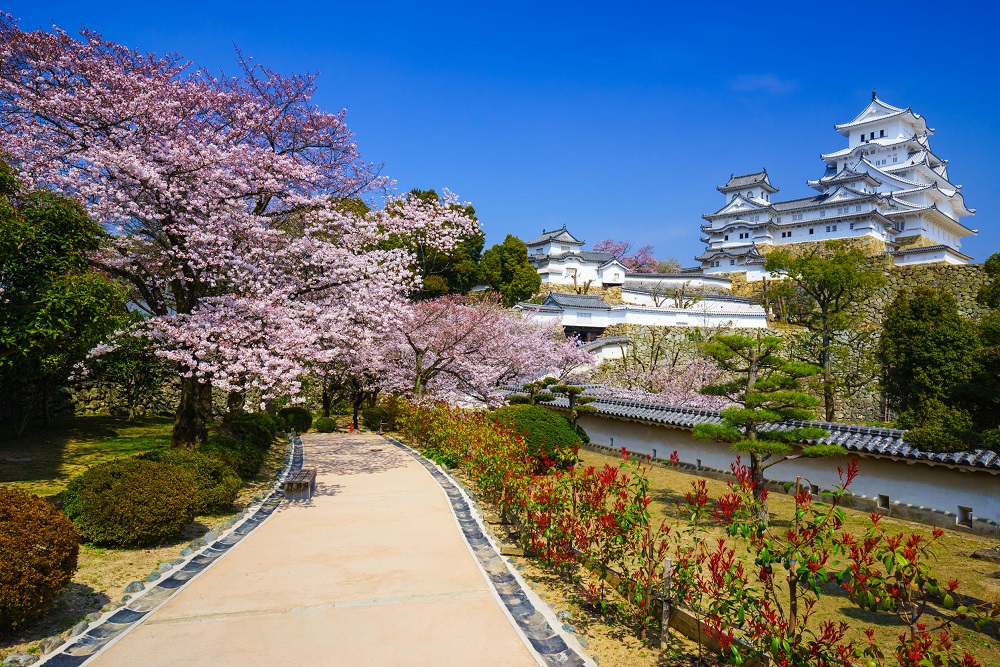
April
 |
 |
March is a popular season to visit Japan, but is it for the weather? Generally people(travelers) start flocking to Japan mid-March as that is when the spring cherry blossoms start to bloom in Tokyo. But during that time, the weather is generally primarily a mix of cloudy and partly-cloudy days with sunny days mixed within. In early March, you can expect some showers and rain with an average temperature within 50 degrees Fahrenheit in Tokyo. The higher up north you go towards Hokkaido, the colder you can expect it to be, whereas if you go down to Okinawa, temperatures can sometimes already be in the 70s! The later in March you get, the more temperatures can start warming up. However, do continue to expect some scattered rain and cloudy days throughout the entirety of March. The last week of March which tends to usually coincide with the blooming of cherry blossoms, is usually significantly warmer than the prior weeks. Still, that doesn't mean it won't get chilly and the air is still decidedly crisp.
Tip: March is just about the peak for the production of cedar pollen which is a major trigger for allergies for a huge part of the population. Be sure to have tissues and perhaps any preferred allergy medication with you. Many Japanese people also wear medical masks to protect themselves from pollen and from sniffling on other people. Don't feel self-conscious to wear one as no one will judge you or assume you have a serious illness. It's quite the norm in Japan and is considered considerate to wear one!
What to Pack: Pack a good mix of some warmer clothing pieces and some easily layerable pieces as well so that you can adjust for any situation. Bring a rain jacket or a waterproof jacket to account for the rainy days as well! Another trend during March is to start incorporating pink, so if anyone has some fashionable pink pieces, you'll fit right in!
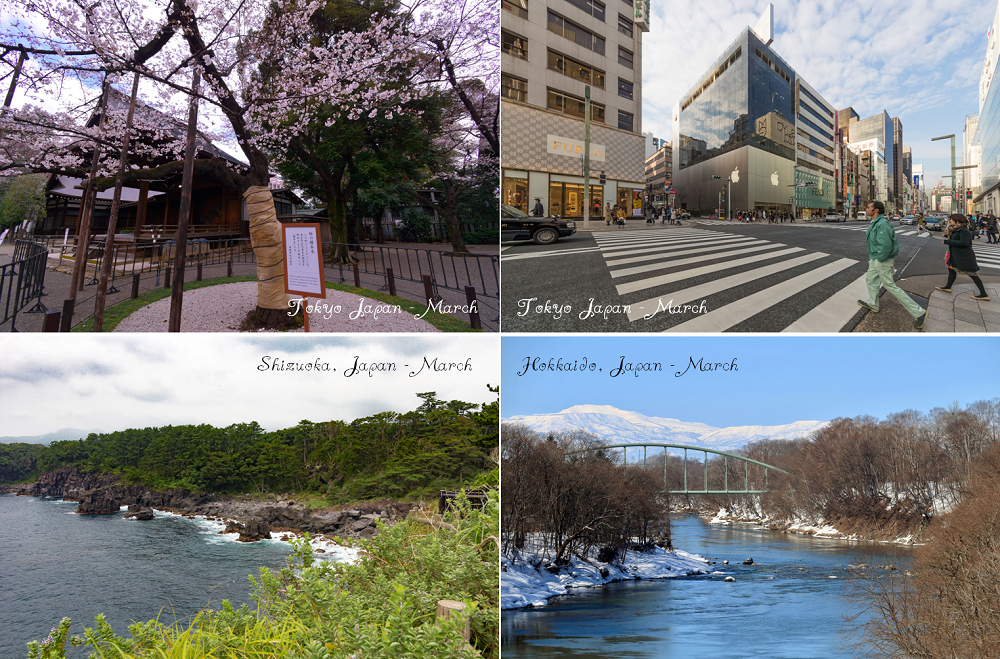
March weather patterns can vary greatly depending on region of Japan and the time of the month
 |
April is a great time to be in Japan! The weather tends to be mild with no extremes of anything including rain, heat, or cold. April is just before the rain starts kicking in full-swing in Japan as there is only May before we reach June, the true start of rainy season in Japan. While all-year round, sporadic bouts of rain is just a common occurence in Japan, April in comparison tends to be fairly dry especially when considering both the latter months. April tends to bring partly cloudly days mixed with some clear days. As is the trend in Japan, the southern prefectures tend to be more warmer than the northern ones. Okinawa during April tends to be warm with highs in the high 70s (°F) and lows in the high 60s (°F), whereas Tokyo tends to be significantly cooler with highs in the mid 60s (°F) and lows in the high 40s (°F).
Aside from the weather, April is smack-dab in the middle of spring, bringing with it spring weather and all of the great spring time blooms. Not only is the weather great conditions for the blooming of cherry blossoms, but also many other types of beautiful and famous flower blooms as well.
Tip: Early April is your last chance to catch the cherry blossoms before the blooming period ends. You can head up north as the northern prefectures are the last to experience the sakura blooms. Make sure to double check the blooming areas beforehand as environmental conditions are always subject to change! If you prefer seeing other famous blooming flowers around Japan, mid to late April is a better bet. You can see the beautiful blue nemophila flowers and the social media post worthy wisteria flowers too!
What to Pack: Not so different from March, it's definitely recommended to pack clothing that you can layer. Allergies usually are still hitting people hard, so tissue and medical masks are still recommended as well. In addition we recommend bringing a camera and some nice looking outfits as there will be plenty of locations for photo ops with gorgeous picture-perfect flowers as a backdrop!
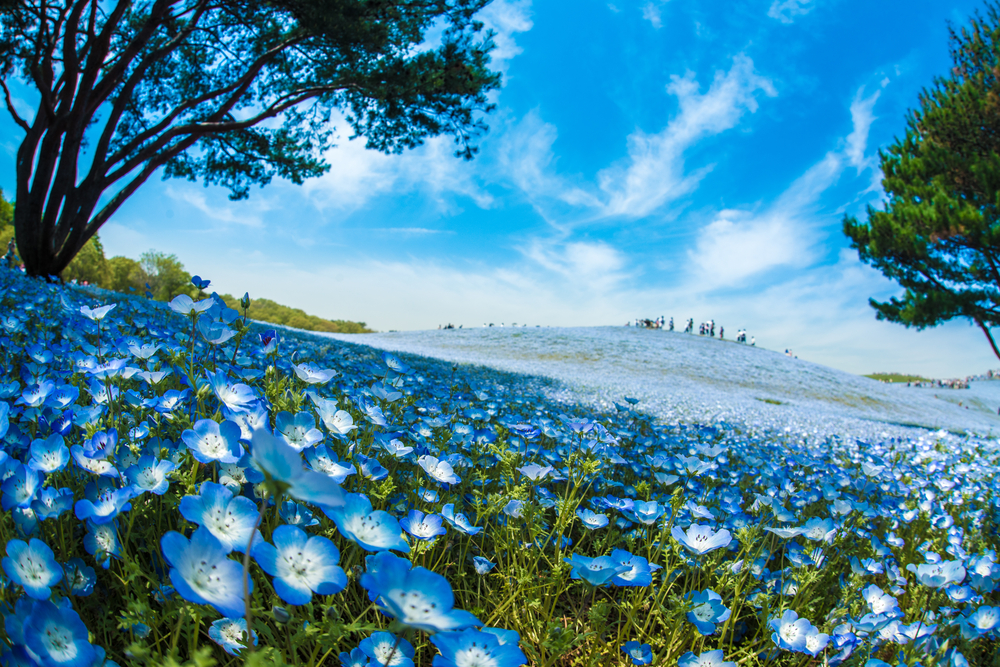
Nemophila flowers at Hitachi Seaside Park
*Weather is ever-changing and not guaranteed. Information is based on past weather patterns. H.I.S. holds no liability for any situation or unforeseen weather event should you choose to book your trip during these months. We always recommend checking online closer to your travel dates for the most accurate weather predictions.
 |
There is a lot going on in March and April due to the springtime festivities and holidays going on throughout the month. In addition, it is a busy time for travel in these two months as many people are traveling all over Japan to catch a glimpse of the sakura blossoms that are short-lived and have an incredibly short blooming time. But aside from the sakura blooms, there are many other nature related reasons to visit Japan during March and April as it is truly one of the most beautiful times to come. There are also springtime festivals and good food to be eaten!
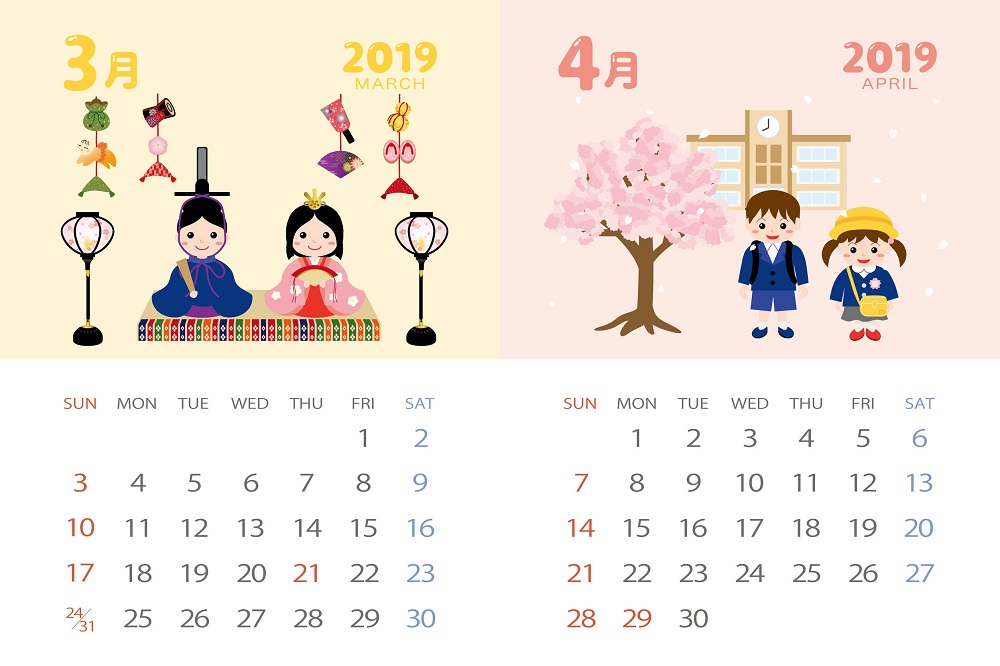
 |
March is filled with great events and holiday celebration festivities. As it is almost year-round, each month brings new activities and festivals depending on the prefecture, and March is no exception. Although the activities listed below aren't all of the wonderful events going on throughout the country, these are popular and/or some exciting and interesting sounding ones. Attending and viewing events such as these is a great way to learn more about the culture and appreciate customs and practices that may be so very different (or similar) to your own!
| March 1- 14 | Todaiji Shunie - Nara |
| The Todai-ji Shunie is a two week Buddhist festival that occurs in Todaiji Temple, referred to as the festival of water and fire. Originally started by a monk as a way to give people a fresh start for the lunar new year to be able to repent for wrongdoings, the ritual consists of using giant torches as the tool that renews and recharges the audience for a fresh new year. The giant flaming torches are gently waved and held over a balcony so that small embers and sparks fall down towards the crowd and audience members below. (Not directly onto the people, there is usually a gap between where the embers fall and where the audience stands) The event goes on for two weeks, with the 12th having the largest and greater amount of torches being lit. The last day, March 14th, called Omizutori is the finale of the whole event. On this day, all the torches are brought out together creating a fiery and wonderful sight. | |
| March 3 | Hina Matsuri |
| Hina Matsuri, also referred to as Girl's Day, is a holiday in which girls are celebrated through blessings and well wishes for the health and happiness of girls. The festivities are a little bit different from that of Boy's Day on May 5th. Instead of colorful carp streamers, dolls are put out in decoration, traditionally a way to wish for successful marriages for daughters. Although some of the traditional meaning still holds true, now it is more of symbolic of the day and of tradition. Throughout Japan you'll find decorations and snacks specifically for Hina Matsuri, and you're almost sure to find events and festivals within prefectures celebrating Hina Matsuri. In Tokyo, there will be a Hina Matsuri event in Hokyo-ji Temple and in Kyoto, at Ichihime Jinja and Shimogamo Jinja. You can also view women and young girls bringing dolls out to sea and drifitng them away at Awashima Jinja in Wakayama. | |
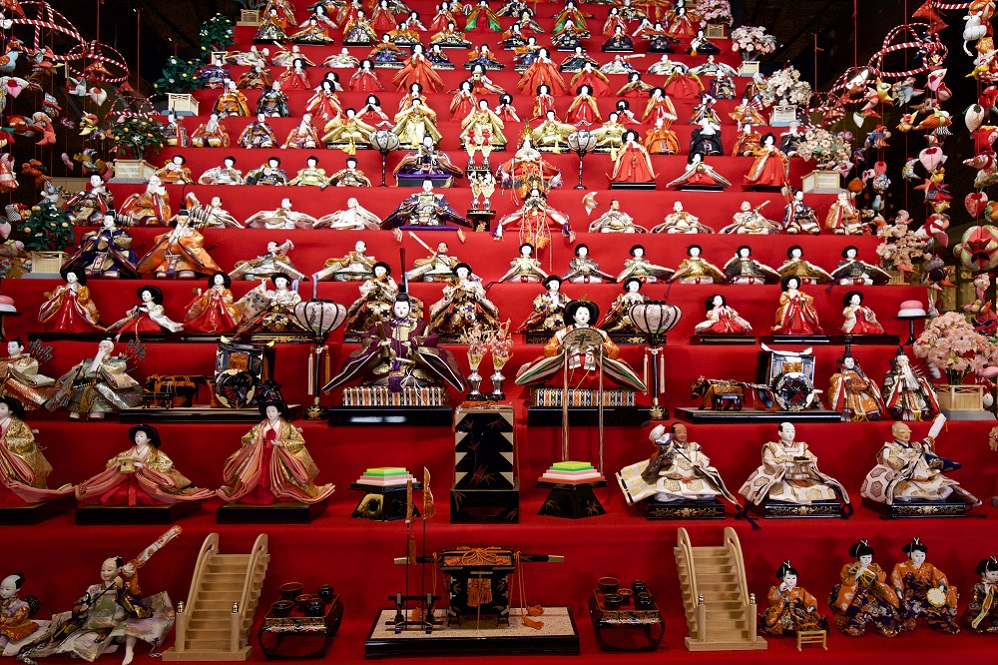
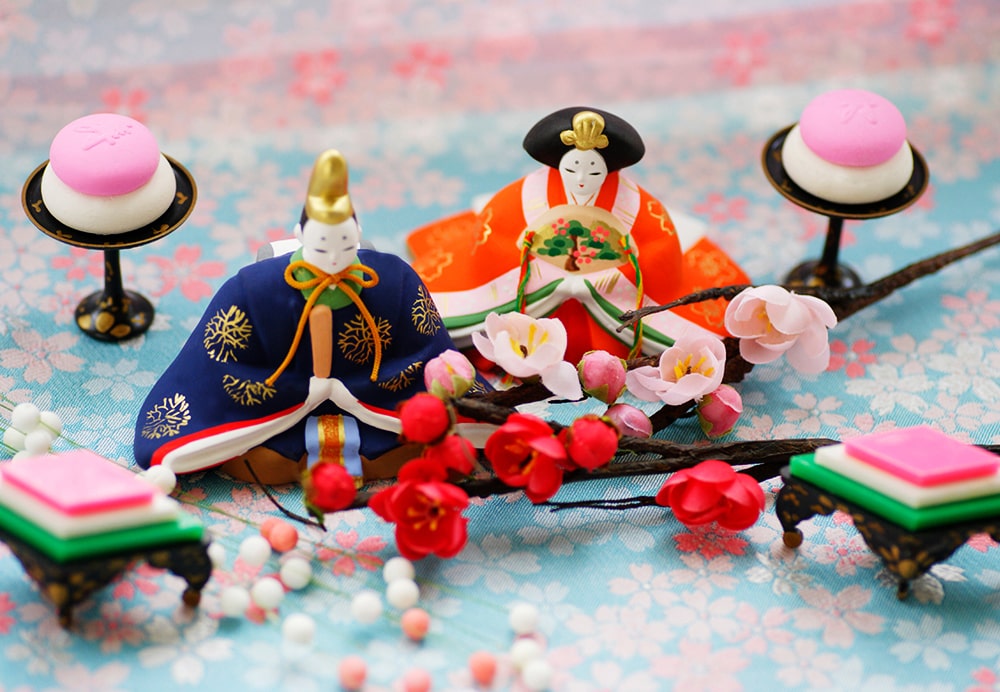
Hina ningyo (dolls) in celebration of Hina Matsuri
| March 3-4 | Jindai-ji Daruma-ichi - Tokyo |
| Jindai-ji Daruma-ichi is a bit more of a smaller scale festival on our list, but a neat place to check out to get some souvenirs and learn more about the culture. Darumas are traditional Japanese dolls that have ties to the Buddhist monk Bodhidharma. At this festival taking place at Jindai-ji, many vendors come together and sell Daruma dolls. Tokyo has a huge number of travelers and visitors, and should your days here coincide with this festival, it may be neat to check out! | |
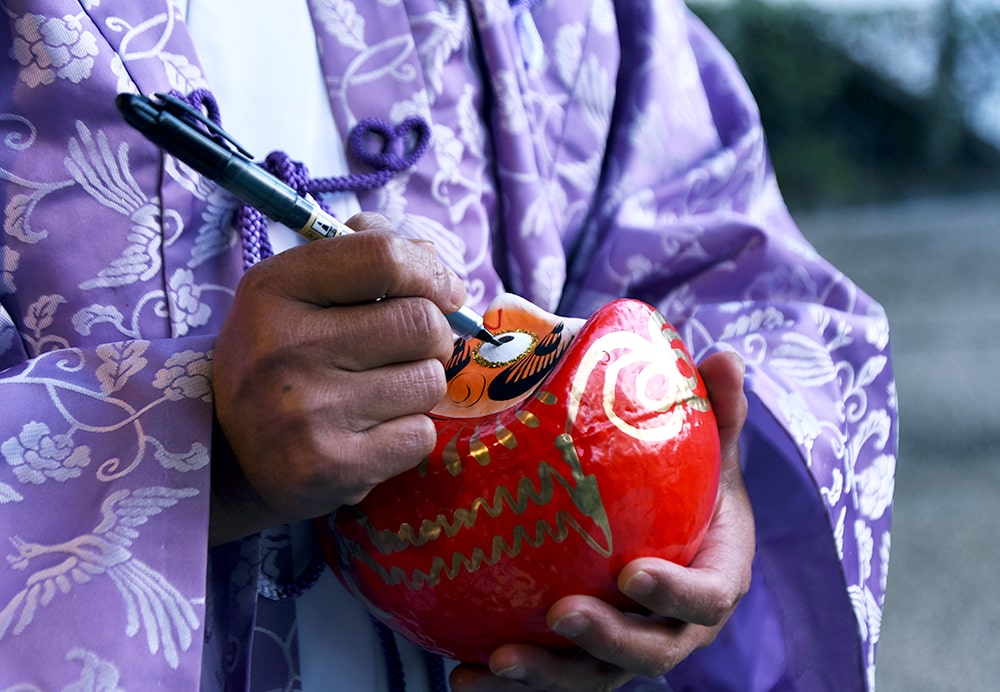
JIndai-ji Daruma Ichi
| March 10 | Takaosan Hiwatari Matsuri - Tokyo |
| Another festival in Tokyo, in this one you can see the priests of Takao-san perform spiritual and religious practices. You can even view and even try out walking on hot coals. The act of walking across the coals is considered a sacred cleansing and purifying act, but be forewarned, there is a chance you may burn your feet should you try it, and it will be of your own free will. | |
| March 18-23 | Heikoku Sai - Ishikawa |
| An interesting event to learn more about the country's traditions, Heikoku sai also known as Oidematsuri is a festival in Ishikawa Prefecture that announces the arrival of spring. Various events goes on during this festival including yabusame events. Yabusame is the traditional art of practicing archery on horseback. There is also a parade that goes on where people dress in traditional ceremonial clothing. This is definitely a great event to check out for history buffs and people who want to emmerse themselves in the traditional. | |
| March 21 | Aizu Higan Shishimai - Fukushima |
| The Aizu Higan Shishimai is an event in Fukushima that signifies the coming of spring and the end of a long winter. It is usually commemorated with a dance by three lions where people dress in traditional dressware and a lion mask and dance to a whistle and taiko-beat. | |
 |
April is another equally eventful month as spring is in full swing. Spring time activities are aplenty, and festivals are numerous as well. Seriously, it seems like no matter where you go, what prefecture you visit, there is a festival, dance, or performance happening in April. The weather is relatively mild making it a pleasant time to spend some time outdoors.
| April 1-27 | Miyako Odori - Kyoto |
| The Miyako Odori is a ticketed event that goes on annually for almost the entire month of April. To see Japanese traditional dance and theatre, this may be a good place to try. Each year brings forth a new dance performance and new theme performed by maikos and geikos of Kyoto. | |
| April 4-6 | Matsuyama Haru Matsuri - Ehime |
| The Matsuyama Spring Festival is the annual spring festival that is usually held during the first weekend of April. People that are dressed up and a parade that goes down the streets of Ehime can be seen during this festival. Usually you can enjoy small activities, picnicking, and cherry blossoms that are still in bloom. | |
| April 5-7 | Shizuoka Matsuri - Shizuoka |
| Shizuoka Matsuri is a major festival of Shizuoka Prefecture. The festival is a spring festival and like many springtime festivals, there are plenty of food stalls, performances, and parades to be seen. The cherry blossoms are usually blooming all around, adding to the spring time cheer. To experience culture and some festival excitement, this is a great event to check out! | |
| April 6-7 | Inuyama Matsuri - Aichi |
| During the Inuyama Matsuri, thirteen elaborately decorated floats are moved through the streets of Aichi. Each float makes for a picturesque sight with hundreds of glowing lanterns hanging from each float. The festival usually runs from 8 in the morning until 10pm. To catch a glimpse of the gorgeous floats with the lanterns, 6pm is probably around the best time. | |
| April 13 | Oiran Dochu - Niigata |
| During Oiran Dochu, people parade through cherry blossom trees and women dressed in gorgeous kimonos reminiscent of the Edo period are chosen to lead. During this event, people in the parade all dress in historical Edo period garments, and many people come to sit and watch the parade. | |
| April 14 | Yasurai Matsuri - Kyoto |
| Yasurai Matsuri is a festival in Kyoto and is almost always held on the second sunday of the month at Imamiya Shrine. The festival is conducted as a ritual and prayer to ward off sickness and prevent illness. Performances are done in front of the shrine, complete with music and sounds from people playing instruments. The festival is free to access and a great way to view some cultural practices. | |
| April 14-15 | Takayama Spring Festival - Gifu |
| The Takayama Festivals are probably one of the more well-known festivals not just in Gifu, but around Japan in general. For two days, twice a year in spring and autumn, the Takayama Spring Festival is held. For both festivals, elaborately and traditionally decorated floats called yatais are paraded down the streets. For those who like the look of old-style Japan that is traditional and ornate, this is a great event to check out! | |
| April 26 - May 26 | Setouchi Triennale - Setouchi Region |
| For art lovers, the Setouchi Triennale is a must-go. Occuring only every three years but three times within that year, the festival spans many areas along the Setouchi region. Each season that it is held has a theme, and for the spring season the theme is "spring encounters". | |
| April 29 - May 3 | Uesugi Matsuri - Yamagata |
| This event usually occurs every year at Uesugi and Matsugasaki Shrine. Considered one of Yonezawa's biggest events, this is a must see for those who enjoy learning about Japanese history. This festival features a samurai parade, a reenactment of a battle, as well as many other performances. | |
| April 29 - May 5 | Arita Ceramics Fair - Saga |
| Arita is a place known for their pottery and ceramic ware, and they are renowned for it. The craft is taken seriously and it shows in the work, making it a sought-after type of porcelain. The fair brings many people as many people are keen to find a good deal on the famous Arita ceramics. | |
Spring Blooming Events
Flowers are a big part of spring, and in Japan, they are truly beautiful. Of course the classic cherry blossoms are a good place to start for flower blooming. Usually the blooms start from the most southern prefectures like Okinawa, and slowly bloom upwards. Hokkaido usually sees the last of the cherry blossoms before sakura season ends. In fact, there are many places all throughout Japan that have cherry blossom festivals and hanami spots, places specifically designed for you to view sakura flowers. Many families come out for picnics, and the hanami places tend to get very crowded so be forewarned!
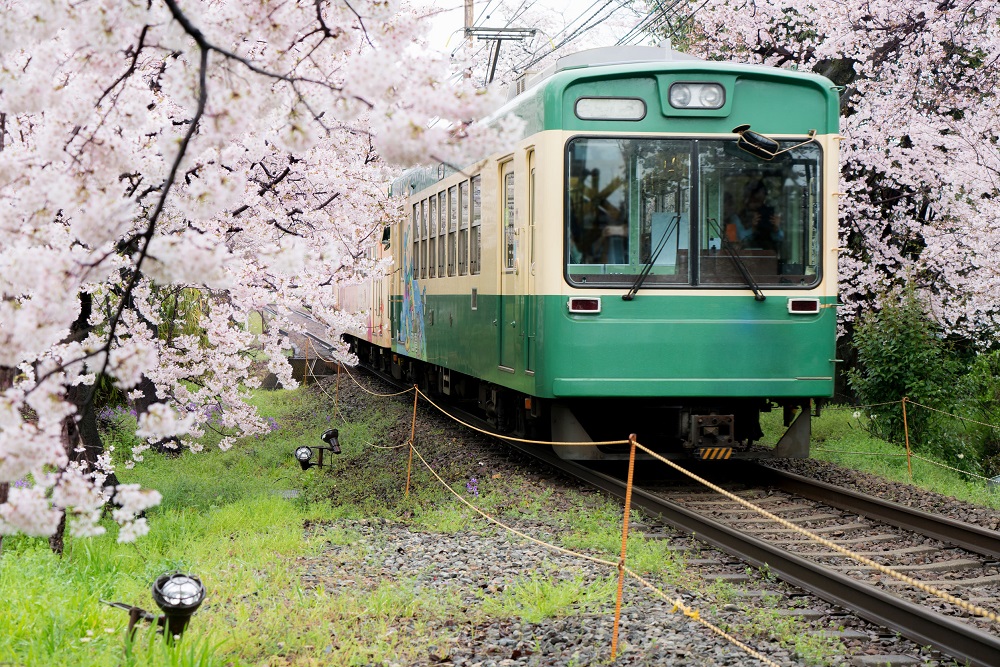
This years (2019) prediction says that Tokyo will be in full bloom towards the end of March, around the 20th. If you're planning on seeing the cherry blossoms in April, head on over to Niigata, Sendai, or Aomori. People visiting towards the tailend of April to see the cherry blossoms are best going to Sapporo as that is most likely the last place you can see it in Japan. Keep in mind the blooming time once the trees start blooming is fairly short-lived. We always recommend keeping up with the latest blooming trends online though!
Aside from the cherry blossoms, there are many other beautiful springtime blooms happening all over Japan! If you're interested, check out these dates below:
Kawazu Cherry Blossom Festival | February 10th - March 10th | Kawaza City, Izu Peninsula
Sakura Tulip Festa | March 30th - April 21st | Sakura City, Chiba Prefecture
Fuji Shibazakura Festival | April 13th - May 26th | Yamanashi Prefecture
Bunkyo Azalea Festival | TBA | Bunkyo Ward, Tokyo
Wisteria Festival | April 13th - May 19th | Tochigi Prefecture
Nemophila Harmony | Mid April - Early May TBA | Hitachi Seaside Park, Ibaraki Prefecture
| Early March | Mid March | Late March | Early April | Mid April | Late April |
| -Last of Ume Blossoms | -Cherry Blossoms -Rapeseed (Canola) | -Cherry Blossoms -Rapeseed (Canola) -Tulips | -Cherry Blossoms -Shibazakura -Tulips -Nemophilas | -Shibazakura -Tulips -Nemophilas | -Shibazakura -Tulips -Nemophilas -Wisterias |
*All Dates are subject to change. Weather and other unforseeable events may affect whether the event takes place. We recommend always double checking for the latest information online or at a tourist office if in Japan.
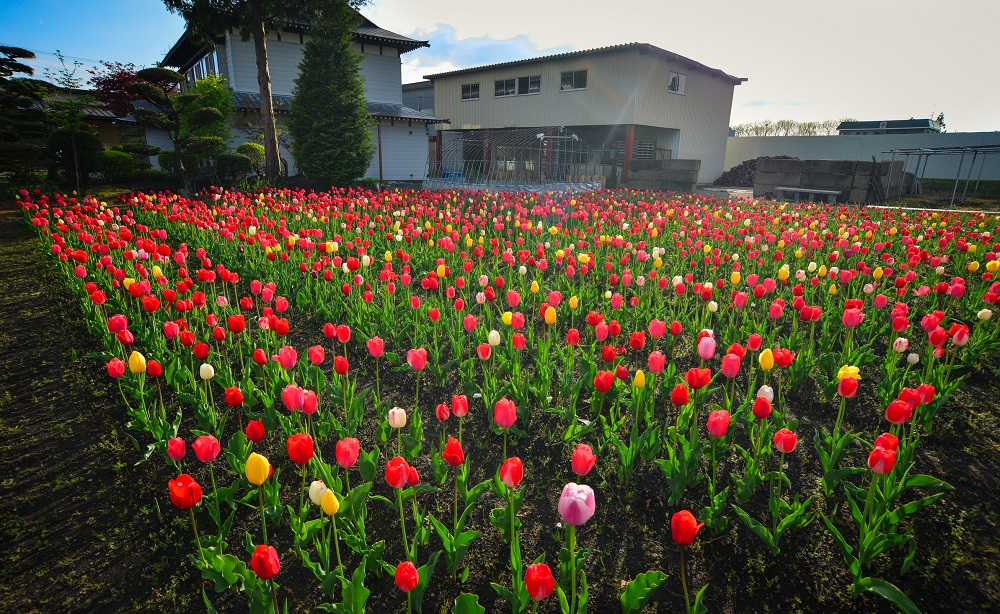

March is the perfect time for travel as the cold weather eases off. The early blooming cherry blossoms, drift ice on the Sea of Okhotsk, the powerful Naruto whirlpools, and other spectacular sights can only be seen during this time of year!
Shiretoko Hokkaido DriftDrift Ice Walk
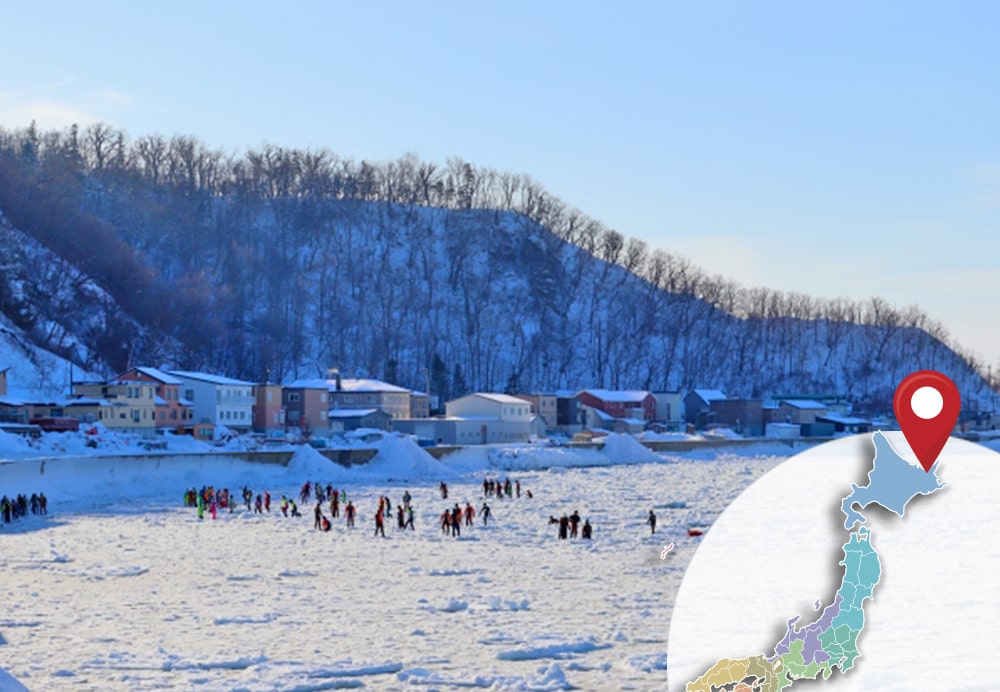
In the Sea of Okhotsk, you can see drift ice from Russia. From late January to early March, in Shiretoko (Utoro), you can enjoy walking on the drift ice, as the beaches are completely covered with it. You will wear a suit with integrated boots that provide high heat retention and buoyancy, so you can walk on the ice and even go into the sea.
Isumi Railway (Chiba)
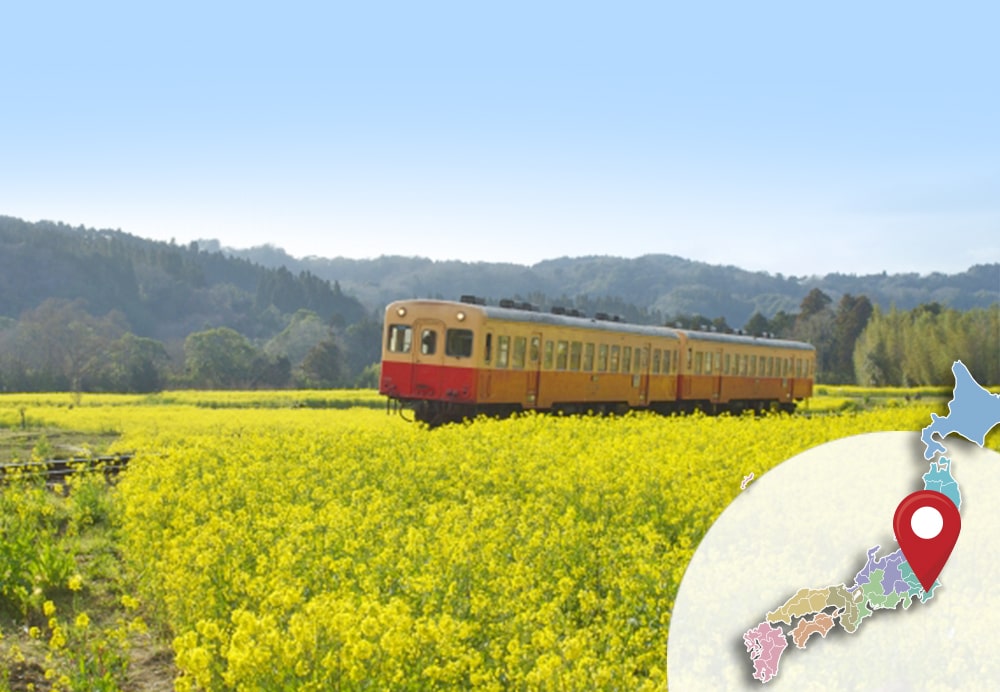
Isumi Railway is a local train route running through undeveloped woodland, rich in nature. Typically from mid-February to early April, yellow canola blossoms cover the line.
The yellow trains with green lines match the canola blossom fields and are very beautiful.
You can spend your time on the train gazing at the scenery from the train windows or getting off the train at a station that catches your interest to take a stroll.
Shiude Mountain (Kaga)
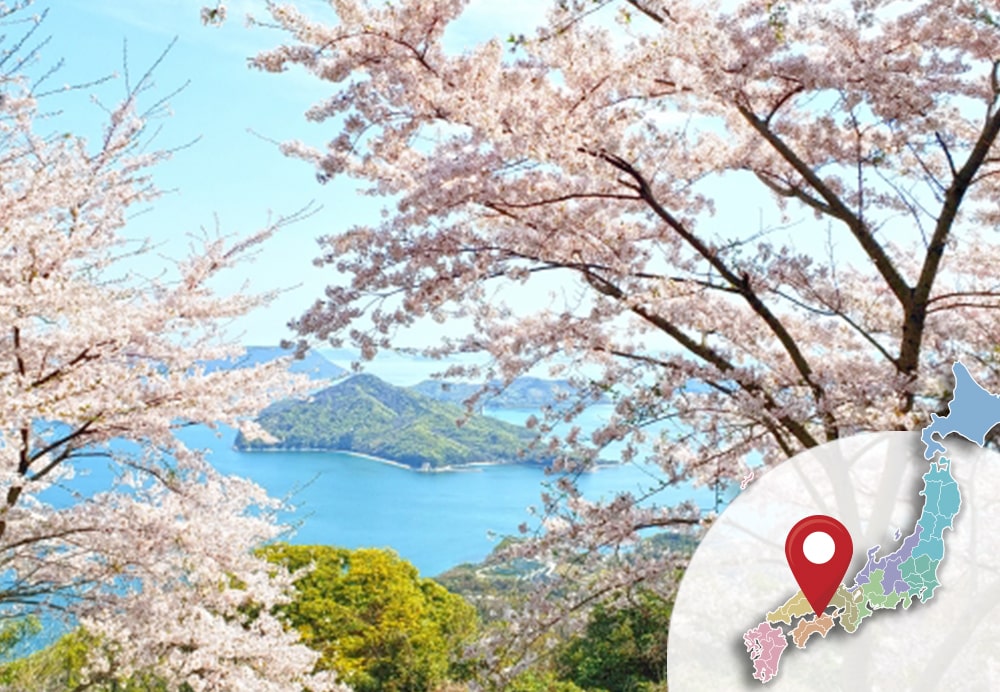
Mt. Shiudeyama is located on the Shonai Peninsula in Kagawa Prefecture, Shikoku. Walking along the nature-rich promenade to the top of the mountain, visitors can enjoy the beautiful scenery of the Seto Inland Sea.
From late March to early April, you will be able to see the cherry blossoms in full bloom, the clear blue Seto Inland Sea, and the green islands floating in the sea, all at the same time.
Osaka Castle Cherry Blossom Light-up
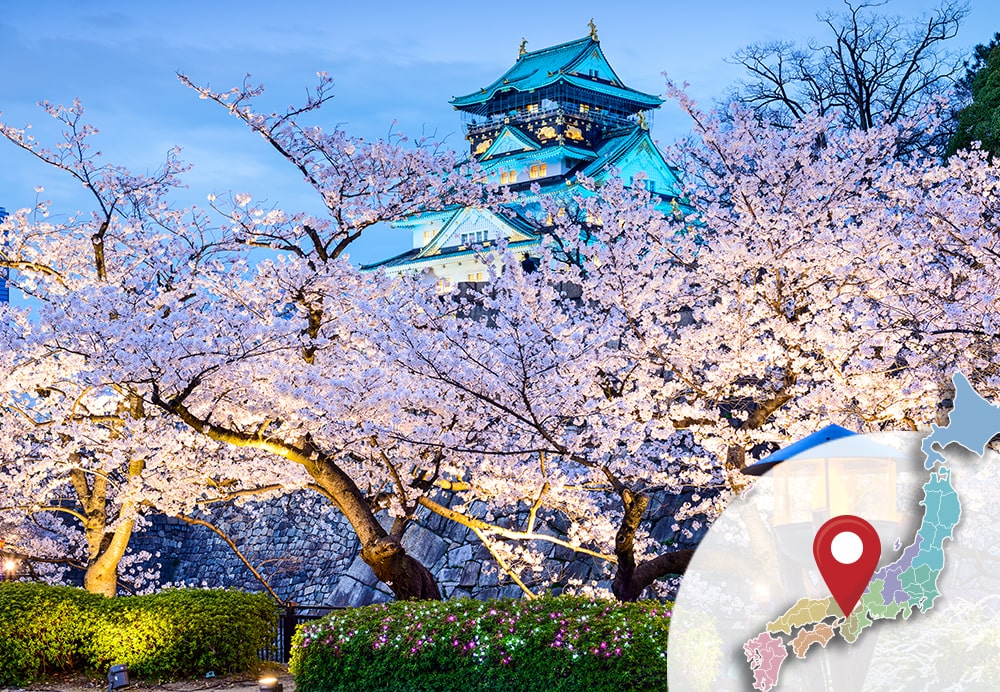
One of the best sightseeing spots in March is Osaka Castle Nishinomaru Garden. From late March to mid-April, when the cherry blossoms are in bloom, night cherry blossom viewing events are held and food stands are set up, making this a spot where both flower viewing and food can be enjoyed at the same time.
January and February: Coming soonRead our other monthly guides here:
March and April: HERE
May and June: HERE
July and August: HERE
September and October: HERE
November and December: Coming Soon

